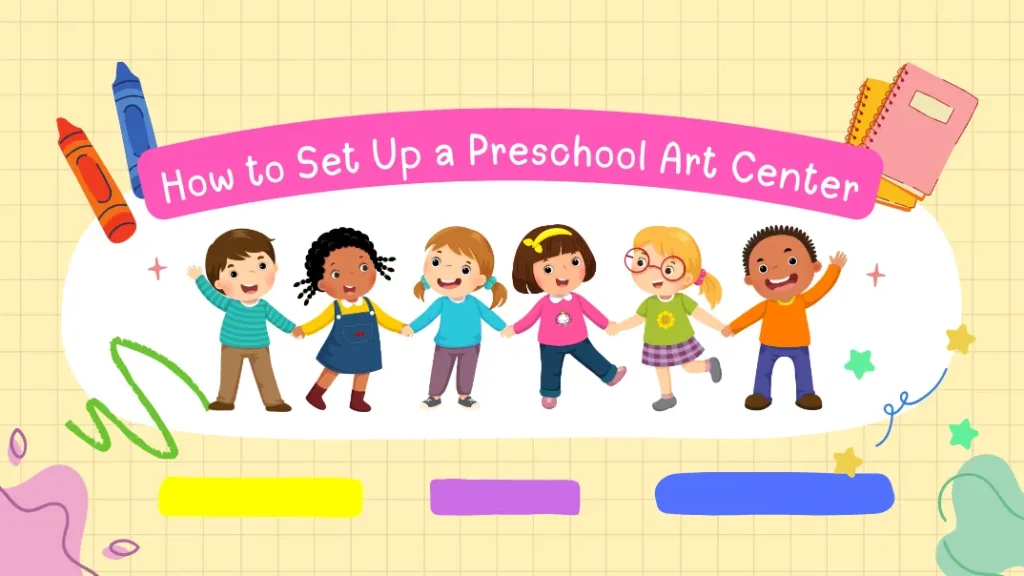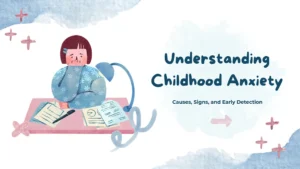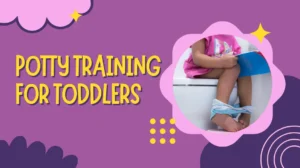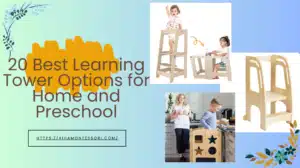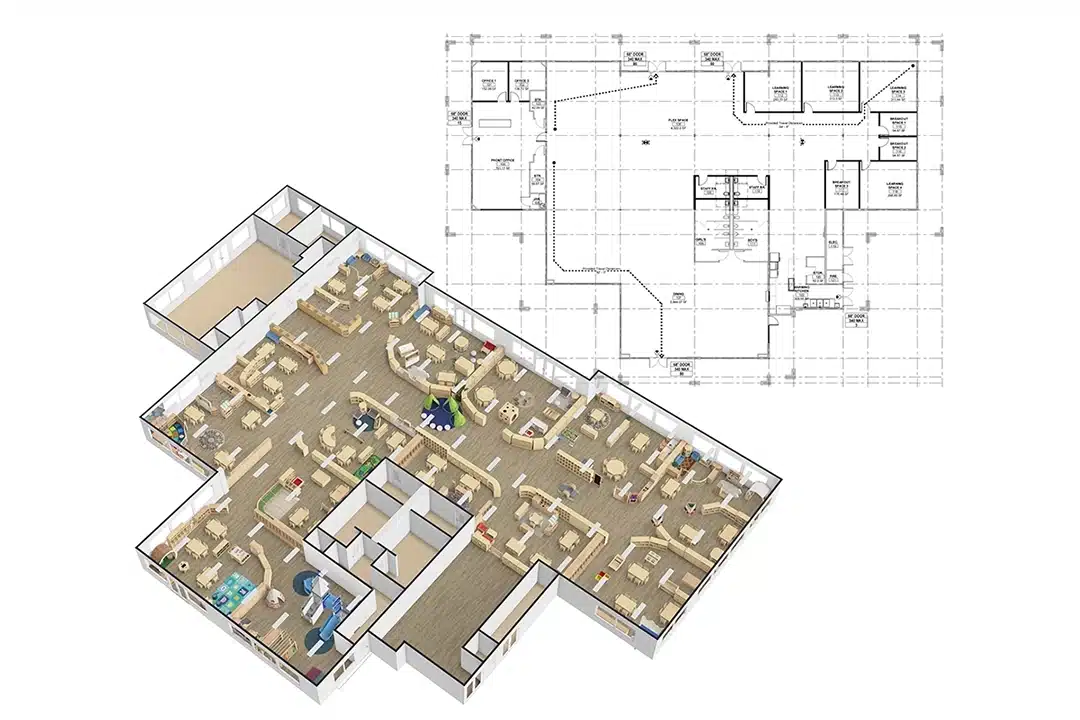Setting up a preschool art center in the classroom is a wonderful way to encourage creativity, develop fine motor skills, and introduce young children to self-expression. An art center is a space where children can explore their imagination through hands-on activities, such as painting, drawing, and crafting. The right setup can inspire young children to express themselves, engage their imagination, and develop fine motor skills. However, how do you ensure the space encourages creativity without getting messy or chaotic?
Starting a preschool art center in your classroom is essential to fostering creativity, promoting cognitive development, and allowing children to express themselves.
In this guide, we’ll walk you through how to set up a preschool art center that encourages creativity, provides enriching learning experiences, and remains organized and accessible for both teachers and students. Whether you’re setting up an art corner for the first time or looking to revamp your current space, these tips will ensure you provide a space where children thrive and express themselves freely.
Importance of Preschool Art Centers
An art center preschool is not just about providing a space for children to draw and paint. It’s a critical part of early childhood education that supports various aspects of a child’s development.
1. Stimulate Imagination
When children can access various art supplies like paints, markers, and textured materials, they experiment with their ideas. These activities allow them to bring their imagination to life. An art center preschool setting nurtures a child’s ability to think critically, problem-solve, and envision new concepts. Their imaginative worlds expand as they experiment with colors, shapes, and designs.
2. Develop Fine Motor Skills
Children who use crayons, paints, or scissors develop better control over their small muscles. Activities such as drawing, cutting, and assembling collages are vital for strengthening the hand-eye coordination and dexterity that children will later use in writing and other important skills. A well-equipped preschool art center is ideal for developing these motor skills.

3. Develop Confidence
Completing an artwork gives children a sense of pride and accomplishment. Their confidence grows when children see their creative efforts displayed in the classroom. By engaging in art, they also learn the value of patience, resilience, and self-expression. Whether painting or creating a 3D sculpture, completing a project in the art center for preschool boosts their self-esteem.
4. Encourage Language Development
As children work in an art center preschool classroom, they often describe what they are making, ask questions, and engage in conversations with peers or teachers. This verbal interaction encourages the development of vocabulary and communication skills. Moreover, discussing their art allows children to express feelings and ideas, further aiding in language development.
Setting Up a Preschool Art Center Ideas
Your preschool art center setup’s layout, materials, and organization are key to its success. Let’s explore some creative art center ideas for preschool classrooms and practical tips for setting up this space.

1. Determine the Size and Location of the Art Center
The first step in setting up a successful art center for preschoolers is deciding where to place it. It should be an area that’s easily accessible for children, yet not in a high-traffic zone. Consider a quiet corner or a dedicated nook within the classroom. If space is limited, it’s helpful to use vertical storage options or mobile carts for supplies.
When choosing the size, ensure that it’s large enough to accommodate a group of children and allows for free movement but also compact enough to keep it organized. Art center ideas for preschool work best in areas where children can have ample room to spread out and work independently or in small groups.
2. Layout and Design of a Preschool Art Center

An organized layout promotes creativity. Break your art center preschool classroom into distinct areas for different types of art activities. For example:
- Drawing and Painting Area: Place easels, large sheets of paper, and crayons, markers, and paints here. This is the most versatile and popular area in your preschool art center.
- Crafting Station: Provide materials like glue, fabric, beads, and scrap paper for creating collages and other tactile projects.
- Sensory Play Area: Integrating sensory play with art is important. Include materials like clay, sand, or playdough to encourage tactile exploration.
These sections ensure that children can flow through different types of creative activities and helps them develop a wide range of skills.
3. Choose the Right Preschool Furniture
The furniture in a preschool art center should be functional and child-friendly. Tables and chairs must be easy for children, and furniture should be sturdy yet lightweight for easy rearrangement. Low, open shelving is ideal for easy access to art center materials for preschool. If space allows, incorporate child-sized easels or drawing boards.
4. Easy-to-Clean Floors
Art can get messy, so ensure the preschool art center has easy-to-clean floors. Vinyl or laminate floors are ideal because they resist spills and can be wiped down quickly. In a classroom art center, you can also consider laying down washable rugs or mats to protect the floor from paint or glue.
5. Art Storage Solutions
Invest in storage solutions that help manage art materials to organize the preschool art center. Clear bins, cubbies, or carts labeled with pictures or words can make it easy for children to find and put away materials. Preschool art center materials like crayons, brushes, and scissors should have designated spots to minimize clutter.
6. Choose a Variety of Art Materials and Tools
An engaging art center for preschool should be stocked with a wide range of materials. Preschool art center materials can include:
- Drawing supplies: Crayons, colored pencils, and markers
- Painting supplies: Watercolor paints, brushes, sponges
- Crafting materials: Paper, glue, fabric, clay
- Texture items: Yarn, buttons, beads, and natural elements like twigs or leaves.
Rotating supplies and introducing new materials will keep the art center preschool classroom fresh and exciting.
7. Display Area
Children’s artwork deserves to be displayed. Create a display area within your preschool art center where you can showcase their art. This could be a bulletin board, wall-mounted frames, or a gallery rail. Displaying children’s work helps foster a sense of pride and accomplishment, making them more motivated to continue exploring their creative ideas.
8. Extend the Space Outdoors
Setting up an outdoor daycare art centre allows children to create with natural materials in a new environment. The natural world provides unique materials and textures for art. Children can use outdoor items like leaves, sticks, and rocks to create art or paint large murals on chalkboards or sidewalks. Outdoor spaces are especially beneficial for kindergarten art center ideas and can be adapted for different seasons.
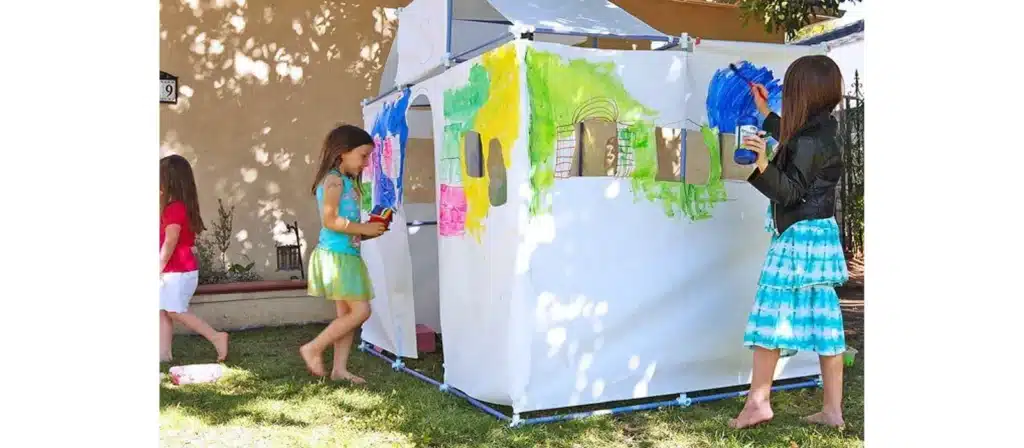
Tips for Creating an Outdoor Art Space
Outdoor art spaces allow children to interact with nature while working on creative projects. Here are some art center ideas for preschool and art center ideas for kindergarten to make the most of an outdoor setting:
- Natural Materials: Use sticks, stones, leaves, and flowers as part of art projects. Children can create nature-based collages or paintings on stones.
- Mobile Art Stations: Consider portable easels or carts for taking the art activities outside.
- Weather-Resistant Supplies: Make sure the materials used for outdoor art are weather-resistant. Use non-toxic paints and washable markers.
- Create a versatile area: Offer a variety of spaces for different activities, including large surfaces for painting, tables for drawing, and open areas for larger collaborative projects.
- Ensuring Safety in Outdoor Spaces: Safety is important in any outdoor art space. Ensure that the area is enclosed or supervised, and keep art materials like scissors and paints safely stored to prevent misuse. Provide sun protection and keep a first aid kit accessible.
Preschool Art Center Supplies
Setting up a preschool art center requires a variety of art center materials for preschool that support creativity and are easy for young children to use. Let’s break down the essential supplies for a well-stocked preschool art center setup.
Basic Materials

A wide variety of basic art supplies are necessary for any preschool art center. These materials encourage children to experiment with different textures, colors, and techniques. Here’s a list of the basic items to include:
- Crayons: Non-toxic and easy to grip, perfect for young children.
- Markers: Washable markers in different colors for drawing and coloring.
- Colored Pencils: Provides shading options for more intricate work.
- Scissors: Safety scissors for little hands to practice cutting.
- Glue and Glue Sticks: Essential for collage work and paper crafts.
- Rulers: Simple plastic or wooden rulers for teaching shapes and straight lines.
- Pencils: Soft-lead pencils for beginners who are learning to draw.
- Chalk: Ideal for use on chalkboards or chalkboard paper, providing a different texture and experience for children.
Paint Pens
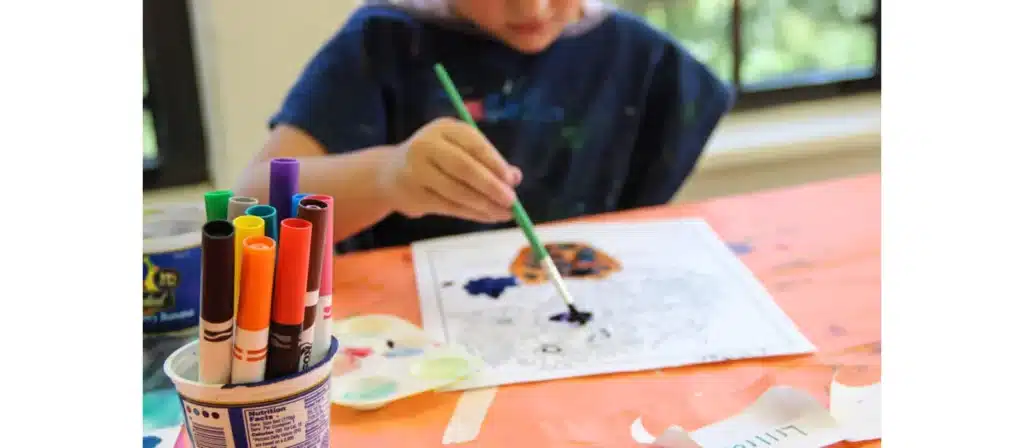
For more vibrant and bold artwork, paint pens are a must. These pens allow children to easily draw or paint without the mess of traditional brushes or paints. They are ideal for projects like:
- Dot Painting: Children can use the pens to create textured artwork by making dots of paint.
- Tracing and Drawing: The fine tips allow for detailed drawing on different surfaces.
Paper

Paper is one of the most essential items in any art center preschool classroom. There are various types of paper you can include to offer a variety of textures and weights for different projects:
- Construction Paper: Available in a wide range of colors, great for cut-and-paste projects.
- Watercolor Paper: Sturdier paper that works well with paints and liquid mediums.
- Tissue Paper: Used for collages, craft projects, or in creative experiments with transparency and texture.
- Newsprint Paper: An affordable option for general drawings and scribbling.
Collage Materials

Collage projects are great for developing fine motor skills and creativity. To build an engaging art center for preschool, include a selection of collage materials that children can use to create layered art pieces:
- Fabric Scraps: Provide children with small bits of fabric that they can cut or tear for textured collages.
- Buttons and Beads: Great for adding 3D effects to their art projects.
- Magazine Cutouts: Let children explore cutting out pictures or letters from magazines to enhance their artwork.
- Foil and Glitter: For children who love to add sparkle and shine to their creations.
Art Furniture
The right art furniture for preschool is key to functionalizing the preschool art center. These pieces of furniture should be child-friendly, durable, and easy to maintain. Here’s a breakdown of essential furniture for a preschool art center:

- Child-Sized Tables: These should be sturdy enough to hold art supplies and withstand messy projects.
- Storage Carts: Mobile carts with bins or drawers for organizing art supplies like paper, glue, and scissors.
- Easels: Provide easels for painting or drawing, allowing children to work standing up or seated.
- Shelving Units: Open shelving for easy access to materials and finished artwork.
- Comfortable Seating: Low chairs or stools that are easy for children to sit on during art activities.
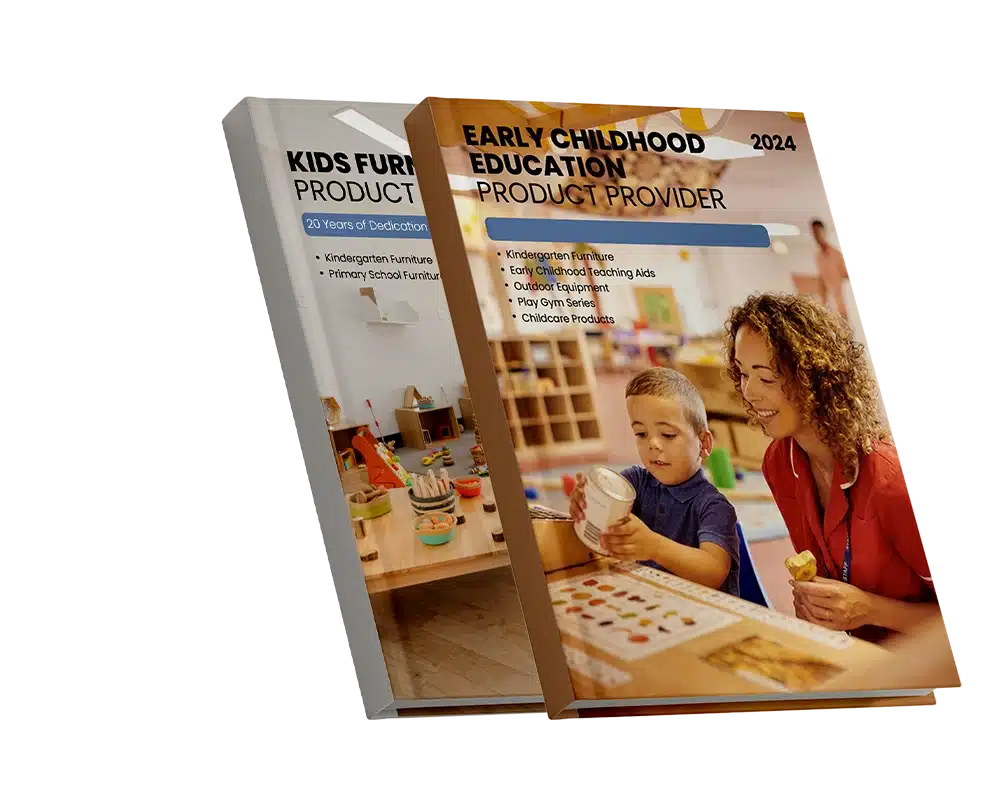
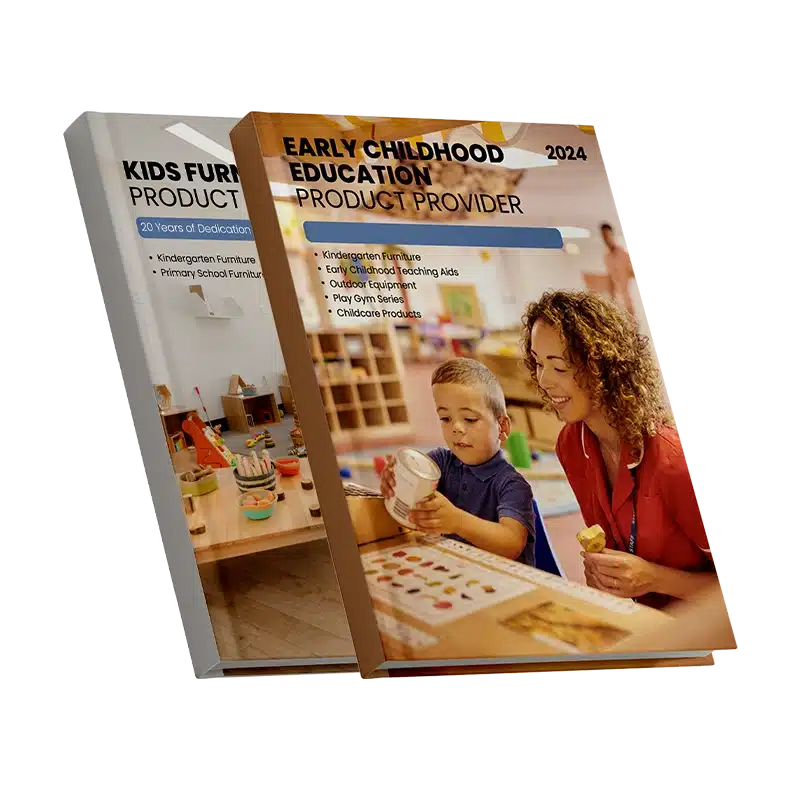
Preschool Art Center Rules
To maintain order and ensure that all children can enjoy the art center in preschool classroom, it’s essential to have a few simple rules:
- Respect the Materials: Teach children to use supplies carefully and responsibly. Materials should be used as intended.
- Clean Up After Yourself: Children should clean up their workspace when they’re done with an art project.
- Take Turns: If multiple children are using the same materials or space, make sure they take turns and respect each other’s space.
- Safety Guidelines: Safety is a priority in any art center preschool environment. Rules should include safe handling of scissors, brushes, and other materials, as well as guidelines for sharing supplies.
Process Art in Preschool
Process art focuses on the creative process rather than the final product. It’s an essential part of preschool art center ideas because it promotes exploration and experimentation. By engaging in process art activities, children develop critical thinking, problem-solving, and decision-making skills. This approach supports personal growth and independence. For example, in a preschool art center, children can:
- Use their fingers to explore painting techniques.
- Play with clay and create sculptures, experimenting with texture and shape.
This type of art fosters experimentation, emotional expression, and creative problem-solving.

Tips for Managing a Preschool Art Center
Maintaining a preschool art center involves more than just providing supplies—it’s about fostering a creative environment where children feel inspired to create and explore. Below are some essential tips for managing the art center preschool:
- Establish Clear Rules: Teach children the importance of respecting materials and the space. Rules like “use materials carefully,” “clean up after yourself,” and “share with your friends” will help maintain a positive environment.
- Organize Supplies: Keep the supplies organized by category and within easy reach for the children. Label storage bins with words and pictures so kids can independently return materials to their correct spots.
- Rotate Materials Regularly: Keep the art center preschool classroom fresh by rotating the materials available. Introduce new supplies or techniques to keep children excited and engaged.
- Maintain Cleanliness: Art activities can get messy, so set up a system where children can easily wash their hands and clean their space. Use wipes or damp cloths for quick clean-ups and sanitize art tools regularly.
- Offer Guided Choices: While it’s important for children to express their creativity freely, you can also provide guided options for projects or activities. This can help children explore new techniques and avoid feeling overwhelmed by too many choices.
- Encourage Independence: Allow children to independently explore materials and engage in their projects. The more they handle art tools and materials on their own, the more confident and capable they become.

Role of the Teacher in the Art Center
The role of the teacher in the art center preschool classroom is pivotal in guiding and supporting children’s creative development. Here’s how teachers can contribute to the success of the art center:
- Facilitator: Teachers should encourage children to explore and experiment with different materials and techniques, offering guidance when needed but not dictating the process.
- Encourager: Positive reinforcement is crucial. Teachers should praise children’s efforts, help them talk about their artwork, and provide constructive feedback to boost confidence.
- Observer: Teachers must observe children’s work to understand their development and interests. This can inform future activities and help with assessing skill development.
- Cleaner: Ensuring that the space remains clean and safe is a vital part of the teacher’s role in managing a successful preschool art center. It’s important that teachers lead by example in maintaining an organized environment.
The teacher’s active participation creates an atmosphere that values creativity while maintaining order and respect for materials.
Art Activities for Preschoolers
Preschoolers benefit from a variety of art activities that help develop creativity, motor skills, and social interaction. Here are six popular art activities that can be implemented in a preschool art center:
1. Finger Painting
One of the most enjoyable and sensory-rich activities for preschoolers. Children use their hands and fingers to spread paint on large sheets of paper, which helps develop fine motor skills while allowing them to explore colors and textures.
2. Collage Making
Children love tearing and gluing paper, fabric, and other materials to create collages. This activity promotes creativity and helps children practice hand-eye coordination as they carefully place each piece.

3. Clay Sculpting
Using modeling clay, children can create simple sculptures and models. This activity is excellent for enhancing fine motor skills, as it involves squishing, rolling, and molding the clay into different shapes.
4. Nature Art
Collect leaves, flowers, and sticks from outdoors and incorporate them into artwork. This not only gives children the opportunity to work with natural materials but also teaches them about the environment.

5. Paper Mâché
A fun, messy art project that involves using strips of paper soaked in glue to form shapes or sculptures. It’s great for building sensory skills and learning about textures.
6. Watercolor Painting
Watercolors allow for subtle blends of color and encourage experimentation. Children can explore different techniques, from wet-on-wet painting to color mixing, and create beautiful art pieces.
Conclusion
Setting up a preschool art center is one of the best ways to promote creativity and early learning in young children. By thoughtfully organizing the space and providing a variety of materials, you can create an inspiring and engaging environment where children can develop essential skills such as fine motor control, language, and imagination. Don’t forget to incorporate outdoor spaces for added variety and allow children to experience art in new ways.

